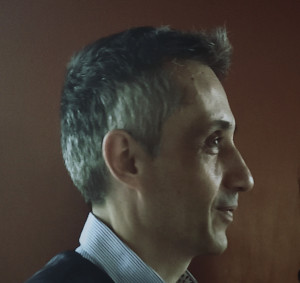If you have read The Alchemist by Paulo Coelho, you will be familiar with the idea of the universe always guiding us to our path. In the book, one only has to follow omens, and they appear almost as a coincidence, but then they are too accurate and timely.
They just cannot be dismissed as coincidence.
If the tale of the Alchemist evoked familiar memories to you, it is because you at one point experienced what is known as synchronicity. When you experience an external event that reflects what you are thinking about or going through.
What is Synchronicity?
Synchronicity is a term coined by the renowned psychologist Carl Jung (from Syn, meaning with, and Chronos –Greek: χρόνος– meaning time). To describe the simultaneous occurrence of two events that are related but have one event does not cause the other.
Synchronicity is a situation where an occurrence from the external world coincides with our psychological state of mind in a manner that provides meaning.
The apparent meaning or relationship we can attach to the moment is from the interconnectedness of the external event and our state of mind. This relationship between two events or the sense shared is essential for synchronicity to happen. Another critical factor is the low likelihood for the instance to occur randomly. These factors are what have formed the theory of synchronicity.
Theory of Synchronicity
The concept of synchronicity conveys the ideas of Carl Jung and the others who came after him and believed his ideas. It was his attempt to explain the relationship between the internal psyche of a person and the physical or material world.
Carl Jung used the theory to explain that the occurrence of multiple but meaningful coincidences is not up to chance. It is instead a blend of spiritual and psychological experience meant to guide your soul in its action or a direction. He called it the ‘acausal connecting principle.’ It means a pattern of connectedness that could not be explained by common causes.
The theory of synchronicity suggests that reality is not a random happening. On the contrary, everything is bound by meaning, and there is an interrelatedness to events what many may dismiss as coincidences are related events if only you happen to be observant to notice the meaning or interconnectedness.
The theory largely relies on metaphysics and the belief of a universal unconscious. It is for this reason that synchronicity seems similar to the Law of Attraction and the principle of vibration as their relationship shall be discussed later. Carl Jung believed synchronicity could explain and describe the universal dynamic that governed all human experience the social, spiritual, emotional, and psychological.
The theory of synchronicity thus suggests an organizing force hidden from the physical world but which connects our inner and outer worlds. It is for this reason that most synchronicities happen just at the right time.
As such, the events we may dismiss to have happened by chance are, in reality, a manifestation of other parallel instances that are as a result of the dynamic as well.
People who are not observant may dismiss the events as mere coincidences and at times even fail to notice them. The theory of simplicity does not also presuppose that all the external events point to a positive path.
Some could be warnings or a negative way that provides a lesson or later on lead to a favorable destination. The theory also pushes synchronicity beyond just one instance into a pattern of events in the external world over a brief time having an interconnection with our state of mind.

Synchronicity vs. Coincidence
Synchronicity and coincidence are easily confused with the former being dismissed for the latter. However, proponents of synchronicity will tell you they are the same thing.
As pointed above, the theory of synchronicity relies on the existence of a collective unconscious or a universal dynamic that is organizing parallel events in different worlds. The implication then is that all coincidences are synchronicities only that we cannot immediately attach a meaning to them.
The last part is what for many, differentiates coincidences to synchronicities. The basis of the theory is to illustrate the connection between the outside and the inside world. The external events have to mirror our internal psyche. Hence, if it does not connect to you or you cannot derive meaning from it, then it is a coincidence, not synchronicity.
Coincidences happen daily from the small events to the genuinely astounding ones. However, the lack of awareness may be making you miss most of them, and the few you identify you cannot associate with your internal state. Therefore, they are soon forgotten, and you lose the universe’s way to offer directions and hints.

At times, it takes a series of coincidences for one to notice a pattern and experience the synchronicity. Once you become aware of the environment about you, you will start to see synchronicities in most areas in your life.
At times the synchronicities happen over time, especially when it comes to meeting new people, decisions you may make, projects you may start, etc. It is only when one piece of the pattern connects with you that you can trace the series of synchronicities.
Being aware of the environment only helps us pick the first aspect of synchronicity, the event from the external world. When you are in tune with the world around you, it becomes easier to notice the coincidences.
However, to be able to derive meaning from them, you need to be also in tune with your mental state. You may not be able to find meaning in every coincidence. Some may be the start of a pattern, or you genuinely cannot attach any connection with your mental state.
Related reading: How Our Conscious and Subconscious Mind Work – Opens in new tab
Synchronicities are not limited to the big decisions and moments they can happen even in the smallest instances of your life as simple as shopping. Sometimes the meaning from synchronicities is evident while in other cases, they will require you to rely on your intuition to decipher the meaning. Coincidences, taken in the context of the acausal principle are disguised synchronicities whose purpose we are yet to fathom.
To Carl Jung and others, synchronicities are determined by an individual’s actions and habits, conscious and unconscious thoughts. This point is where the similarity with the law of attraction comes into play. The ideas in your mind attract synchronicities that, when identified and seen for what they are, generally provide a path to the state you want.
Science and Synchronicity
The biggest challenge to synchronicity is its acceptance as a scientific explanation or principle. In coining the term synchronicity, Carl Jung accepted the conventional means of causality were not capable of measuring highly unlikely instances of coincidences. As a result, it cannot be tested in the empirical method subjected to all scientific principles and thus regarded as unscientific.
Besides the lack of scientific measurement, there is also the criticism called confirmation bias. It is a concept in cognitive science and psychology, which explains the tendency to either interpret or look for new information in ways that confirm preconceptions you already have. On the other hand, you intentionally avoid interpretations or any information that contradicts with your beliefs.
What this means in synchronicity is that you notice more the contradictions that have meaning while you ignore the meaningless coincidences. The implication is that synchronicity is only seen to be existing because we give the meaningful coincidences far greater prominence than the meaningless ones. The confirmation bias criticism is further extended to the fact that one can only experience synchronicity if they can derive meaning from the situation.
The description and working of the synchronicity may make it look mystical and easy to dismiss as false science. This connotation can give a negative perception of the theory, but it is based on several science principles that have been accepted and proved to exist.
First, on the issue of confirmation bias, Carl Jung and other synchronicity proponents believe that synchronous events happen at a higher rate than what could be created by random chance. This rate is far much higher even when one accounted for confirmation bias.
Secondly, not accepting the theory as science does not mean it is not useful. It can still explain phenomena or be a model people can use to plan their lives. There are many spiritual and emotional concepts like intuition, which science cannot prove but are also accepted as existing. (Further reading: Make More Effective Decisions by Using Your Intuition)
Thirdly, the theory is based on several principles and concepts of science. Albert Einstein’s Law of Relativity concluded that everything is made up of energy that is vibrating at different levels.
He would then equate that because all things in the universe are made up of energy, they are thus connected. It is the scientific basis for the Law of Attraction and the Law of Vibration. These principles under that law give support of the notion of universal and collective consciousness.
Another scientific principle is that of entanglement. It is what Einstein dismissed as ‘spooky action in the distance’ but which has later been demonstrated to be possible in scientific experiments. In principle, two physical objects, which have been in contact with each other, are then seen to interact, despite being separated by vast distances instantaneously. The concept shows how synchronicity can defy space and time. It is what makes it possible that you could be thinking about a friend or relative, and they happen to call you at that time.
As the laws of attraction show, we are part of the universe emitting and receiving energy we had given back. Synchronicity is like a window that connects your inner world to the external world, and you became part of the dynamic that is organizing the events.

Spirituality and Synchronicity
Whatever your religious leanings or lack thereof, synchronicity does have several spiritual connotations. If you believe in the existence of a higher power of being, then synchronicities are easy to make sense of and interpret as answers and directions to your prayers and wishes. Even if you lack such beliefs, synchronicities play a role in helping you find your purpose once you become aware of them.
Synchronicity makes us part of a whole system, and through it, you can understand and find meaning to most events that happen around you. They can serve as a guide to your path, spur you to action, and lead you up in making life decisions. In other cases, they chart your life to a specific moment. Only in looking back do you realize all the seemingly random events led you to that point.
The process of being aware and learning to interpret the coincidences in life is a spiritual moment because it requires you to be ever in the present moment. You also need to be in tune with your inner voice to understand what energies you are sending out in the world as synchronicities happen as a reflection of your inner psyche.
Spirituality and synchronicity also share the same mysticism. It is hard to elaborate both fully, and they vary from one person to another in intricacies. They also seem to increase and be more meaningful as one becomes more aware of them and open to their role. Both rely on an organizing force in the universe whose working is not seen until it manifests itself in different forms.
Synchronicity can serve as guidance leading to further spiritual development and the deferring of issues you are not sure of to a higher power and universal providence. It allows us to be in harmony with ourselves and everything else around us. The pursuit of sense and purpose in life can be answered by synchronicity and spirituality.
Finally, an understanding of synchronicity can help bridge the gaps of spirituality and as well as science. It offers an explanation and has a basis in each of these two subjects that are usually treated as opposites.

Synchronicity Signs
A significant idea in this article has been the need for you to be aware of both your inner world and your external world. This awareness is necessary to observe and make sense of your coincidences. Being mindful of synchronicity helps you know some of the signs, which you may have dismissed as nothing or even a weird coincidence. These are just some of the general signs since synchronicity is a complex event.
- You are humming to a song in your mind then suddenly the song plays on television or radio. It is a positive sign, and at times, there is a message in the song.
- You keep on seeing the same message or quote or hearing the same song everywhere you tend to go. The quote could be speaking something to you or leading you in the right direction.
- You meet a total stranger who happens to have a solution to a problem you are currently facing without you talking about it to him or her or knowing anything about you.
- You keep seeing the same series of numbers like 1111, 222, 1212, etc. You can see them on book pages, the clock, number plates, and other platforms. Most are known as angel numbers and have a deeper meaning but are generally positive signs of affirmation that you are on the right path.
- You keep planning to get a specific thing for yourself and then either a friend or relative gets it for you as a gift without you telling them about it at all.
- You have been having a dilemma or a problem, and then out of nowhere, you bump into a solution. It could be an ad on TV, a product at the store, or a statement someone makes.
- You overhear a conversation by strangers that happens to mirror your life. You could also be watching a TV show or movie that depicts the current struggles or moments you are having in your life.
- Things happen to you at the right moment when you needed them most.
- You keep having a series of breakthroughs that you least expected or in the middle of a crisis.
- People who can help you solve an issue or move ahead suddenly begin showing up in your life with the advice or help you need.
- Someone in need of help, a stranger, a friend or relative asks for your assistance, and you have the exact solution for him or her.
- You were thinking about a friend or relative, and then they reach out to you at that moment.
The signs of synchronicity are endless. It is a matter of increasing your connectedness with both your worlds. Do not dismiss even the smallest of coincidences as random. Once you understand the workings of synchronicity, it opens a world of extensive options and gives a fuller meaning to your experiences as well. It expands your perspectives and the way with which you face and solve different challenges that come your way.
Now take the related Quiz, to check your knowledge on Synchronicity!
Related Reading: How to Use Bibliomancy for Guidance and Inspiration (New Modern Tool to Use)– Opens in new tab
Stay in Touch
 Join our newsletter by using the forms on this website or click here!
Join our newsletter by using the forms on this website or click here! Follow us on Google News
Follow us on Google News Follow us on Facebook
Follow us on Facebook
Featured Image by Gerd Altmann from Pixabay







